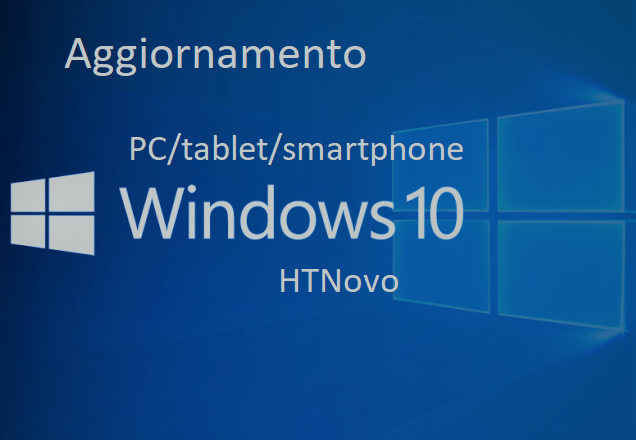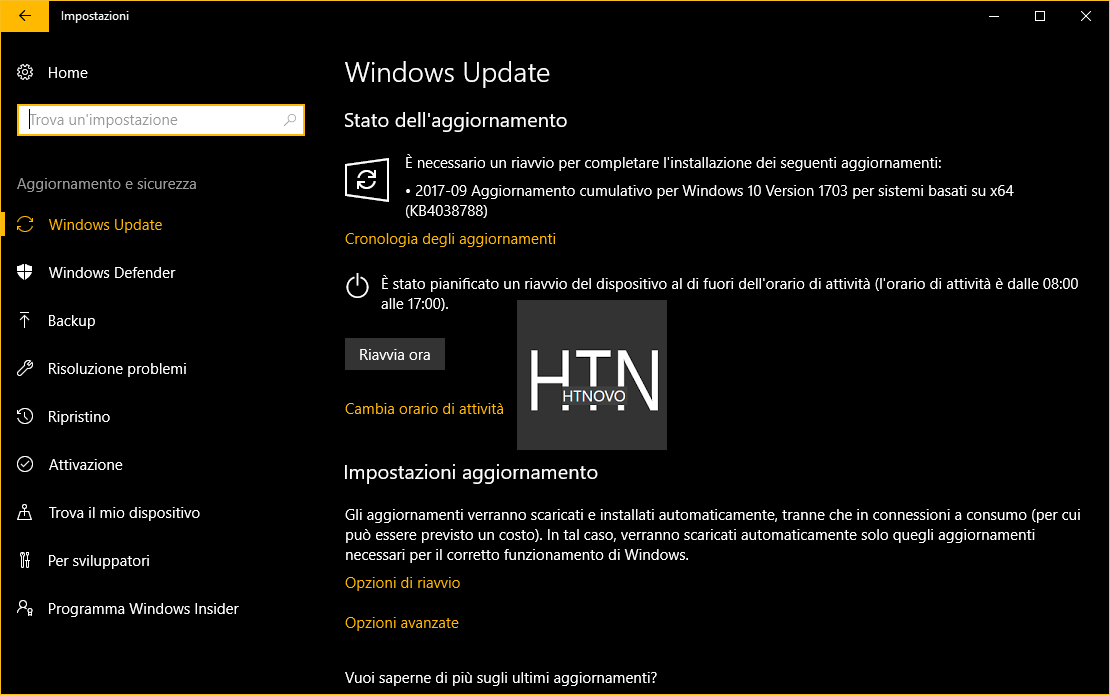Windows 10 stabile si aggiorna e arriva alla Build 15063.608, sia su desktop/tablet che su smartphone, con i soliti bug-fix ed un inedito Update per il browser Edge.
Consueto Patch-Tuesday Microsoft per le varie versioni del Sistema operativo, avutosi nella serata di ieri, con aggiornamenti qualitativi e di sicurezza resi disponibili via Windows Update sia su PC/tablet, sia su smartphone.Come in ogni secondo martedì del mese, gli utenti Windows 10 desktop/tablet hanno ricevuto l'aggiornamento cumulativo KB4038788 contenente miglioramenti e bug-fix per le diverse aree del Sistema, oltre all'immancabile aggiornamento per la sicurezza di Adobe Flash Player e al classico strumento di rimozione malware.
Gli utenti di Windows 10 Mobile hanno ricevuto il medesimo qualitativo con, come sempre, il medesimo changelog ufficiale della versione per PC.
Entrambe le versioni arrivano alla Build 15063.608.
Curiosamente, il Browser predefinito, Microsoft Edge, oltre a soliti miglioramenti che lo vedono protagonista di riflesso nel changelog ufficiale, ha avuto un aggiornamento grafico nella barra degli strumenti.
L'icona Hub (Preferiti, elenco di lettura, cronologia e download) è stata sostituita con quella che siamo stati abituati a vedere, già da qualche Build, nelle versioni Insider di windows 10 Fall creators Update, in arrivo per il pubblico il prossimo 17 ottobre.
Il classico menu hamburger si sovrappone alla classica stella dei preferiti.
Ricordiamo che il Browser Edge viene aggiornato esclusivamente in occasione dei due Major Update semestrali (per il momento, finché Microsoft non si deciderà a portarlo nel Windows Store), dunque il piccolo aggiornamento di questo Patch-Tuesday di settembre è un evento unico, mai registrato in passato.
Come abbiamo sottolineato nel recente Report sulla situazione attuale di Windows 10 e Windows 10 Mobile, Fall Creators Update, fra le tantissime novità, introdurrà il nuovo motore di rendering HTML16, con performance migliorate del 40%, rispetto a Creators Update.
Windows 10, Build 15063.608 | Changelog Ufficiale
- Addressed issue where the color profiles do not revert to the user-specified settings after playing a full-screen game.
- Updated HDR feature to be turned off by default in the OS.
- Addressed issue where you can’t open the Start menu when you add a third-party IME.
- Addressed issue with scanners that rely on inbox driver support.
- Addressed issue in a Mobile Device Manager Enterprise feature to allow headsets to work correctly.
- Addressed issue where some machines fail to load wireless WAN devices when they resume from Sleep.
- Addressed issue where Windows Error Reporting doesn’t clean up temporary files when there is a redirection on a folder.
- Addressed issue where revoking a certificate associated with a disabled user account in the CA management console fails. The error is “The user name or password is incorrect. 0x8007052e (WIN32: 1326 ERROR_LOGON_FAILURE)”.
- Addressed issue where LSASS is leaking large amounts of memory.
- Addressed issue where enabling encryption using syskey.exe renders the system unbootable.
- Updated the BitLocker.psm1 PowerShell script to not log passwords when logging is enabled.
- Addressed issue where saving a credential with an empty password to Credential Manager causes the system to crash when attempting to use that credential.
- Updates to Internet Explorer 11’s navigation bar with search box.
- Addressed issue in Internet Explorer where undo is broken if character conversion is canceled using IME.
- Addressed issue with the EMIE where Microsoft Edge and Internet Explorer repeatedly switched between each other.
- Addressed issue where a device may stop responding for several minutes and then stop working with error 0x9F (SYSTEM_POWER_STATE_FAILURE) when a USB network adapter is attached.
- Addressed issue where some apps cannot be opened because the IPHlpSvc service stops responding during the Windows boot procedure.
- Addressed issue where spoolsv.exe stops working.
- Addressed issue where the Get-AuthenticodeSignature cmdlet does not list TimeStamperCertificateeven though the file is time stamped.
- Addressed issue where, after upgrading to Windows 10, users may experience long delays when running applications hosted on Windows Server 2008 SP2.
- Addressed RemoteApp display issues that occur when you minimize and restore a RemoteApp to full-screen mode.
- Addressed issue that sometimes causes Windows File Explorer to stop responding and causes the system to stop working.
- Addressed issue that causes the Export-StartLayout cmdlet to fail when exporting the layout of tiles at startup.
- Addressed issue where the option to join Azure AAD is sometimes unavailable during the out-of-box experience.
- Addressed issue where clicking the buttons on Windows Action Center notifications results in no action being taken.
- Re-release of MS16-087- Security update for Windows print spooler components.
- Security updates to Microsoft Graphics Component, Windows kernel-mode drivers, Windows shell, Microsoft Uniscribe, Microsoft Edge, Device Guard, Windows TPM, Internet Explorer, Microsoft Scripting Engine, Windows Hyper-V, Windows kernel, and Windows Virtualization.
Come aggiornare Windows 10 alla Build 15063.608
Al solito, per non attendere l'installazione automatica degli Update cumulativi o se avete impostato come 'a consumo' la vostra connessione internet:
Start > Impostazioni > Aggiornamento e sicurezza > Windows Update > Verifica disponibilità aggiornamenti > Download > Riavvio (al termine del download).
Inoltre, potete provvedere ad aggiornare manualmente da Microsoft Update Catalog.
Come aggiornare Windows 10 Mobile alla Build 15063.608
Discorso analogo per il vostro smartphone Windows 10, se non siete connessi in Wi-Fi:
Menu a tendina > Tutte le impostazioni > Aggiornamento e sicurezza > Aggiornamenti > Verifica disponibilità aggiornamenti > Download > Riavvio (al termine del download).
Articolo di HTNovo





